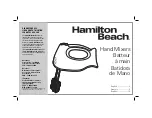
Pr
oFX8v2 • Pr
oFX12v2 • Pr
oFX16v2 • Pr
oFX22v2 • Pr
oFX30v2
16
ProFX8v2 • ProFX12v2 • ProFX16v2 • ProFX22v2 • ProFX30v2
Additional Inputs and Outputs
28. Mon Send
Stage monitors allow the talented musicians in the
band to hear themselves clearly on stage. This can be a
good thing! The monitor mix may be carefully adjusted
in level using the aux mon controls. These tap a portion
of each channel's signal to provide a 1/4" TRS output
here to feed external stage monitors. These could
either be passive stage monitors powered by an
external amplifier, or powered stage monitors with
their own built-in amplifier.
The monitor signal is the sum (mix) of all the
channels whose aux mon control is set to more
than minimum. If they want “more me and less Brian,”
you may turn up their channel's aux mon control,
and turn down Brian's.
The overall output level may be adjusted with the
aux master mon knob and mon 1 may have its EQ
tweaked with the graphic EQ if the main mix/mon 1
switch is engaged. Alternatively, you could add an
external graphic EQ between this output and your
powered monitors. This will allow you to adjust
the EQ, and minimize the chance of feedback from
nearby microphones.
The monitor output is not affected by the main
mix fader or the channel faders. This allows you to set
up the monitor mix and level just right, and not have
it change when a channel fader or the main mix fader
is adjusted. This is known as “pre-fader.”
There is one mon send jack on each ProFX8v2
and ProFX12v2, two mon send jacks on each
ProFX16v2 and ProFX22v2 and three mon
send jacks on each ProFX30v2.
ProFX8v2 • ProFX12v2
28
30
35
32
31
36
29
29. FX Send
This 1/4" TRS line-level output may be used to feed
an external effects processor (FX), such as a nice
sound effect, or delay unit. The output from this jack
is an exact copy of what goes into the internal FX
processor, being the careful mix of all channels whose
aux FX control is turned to more than minimum.
(The processed output of the internal FX does not
come out of this output, but is added internally to the
main mix or monitor mix.)
The overall output level may be adjusted with the
aux master FX knob. (This knob also affects the level
going into the internal FX.)
The output is “post-fader,” so any changes to the
channel faders will also affect the level going to the
external processor.
The processed output from the effects processor
is usually returned to the aux/stereo returns or a
spare channel, and you may carefully mix the original
unprocessed channel (dry) and the processed channel
(wet). Altering the original channel fader increases
both the wet and dry signals and keeps them at the
same delicate ratio. For example, the reverb remains
at the same level relative to the original.
30. FX Footswitch
[ProFX8v2, ProFX12v2, ProFX16v2, ProFX22v2]
This 1/4" TRS connector is where to connect your
favorite footswitch. This allows you to easily mute or
un-mute the internal effects at will. Any one-button
on/off footswitch will work.
If the internal FX have already been muted with the
internal FX mute switch, then the footswitch has no
effect.
The ProFX30v2 has an additional mon send
jack in place of an FX footswitch jack.
31. Stereo (Aux) Return L/R
The stereo (aux) returns are designed for 1/4" TRS
balanced or 1/4" TS unbalanced signals, from -20 dB to
+20 dB. They allow the stereo processed output from
external effects processors or other devices to be added
to the main mix.
Level adjustment of the incoming signals is made with
the aux return controls.
You may also use these inputs to add any stereo
line-level signals to your main mix, so it could be
another line-level source, not just an effects processor.
If you are connecting a mono source, use the left
(mono) stereo return input, and the mono signals will
appear on both sides of the main mix.
















































